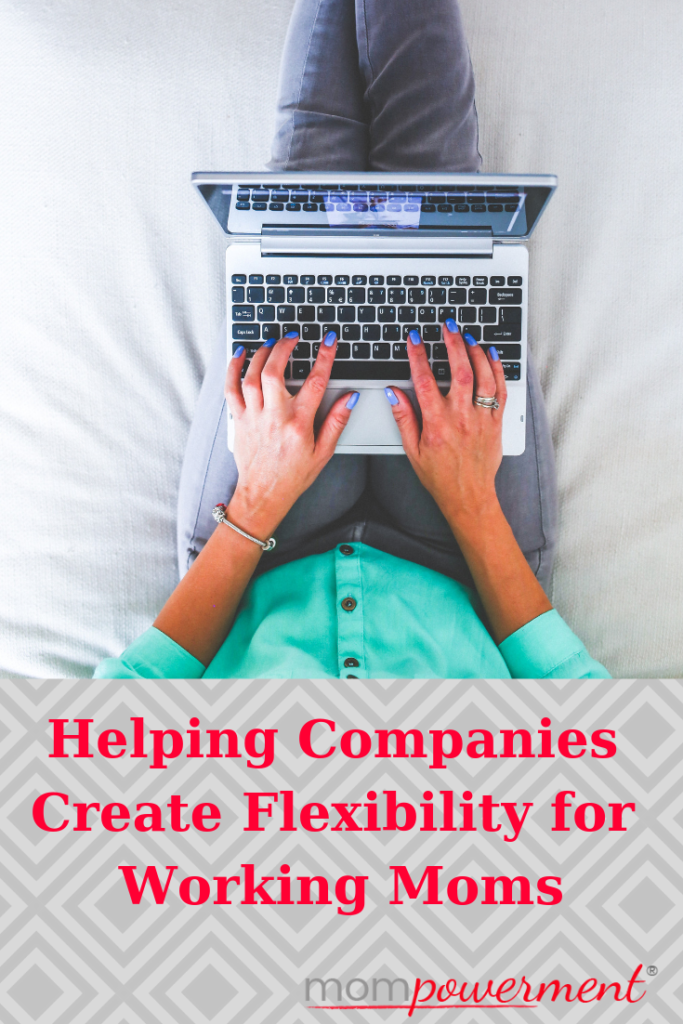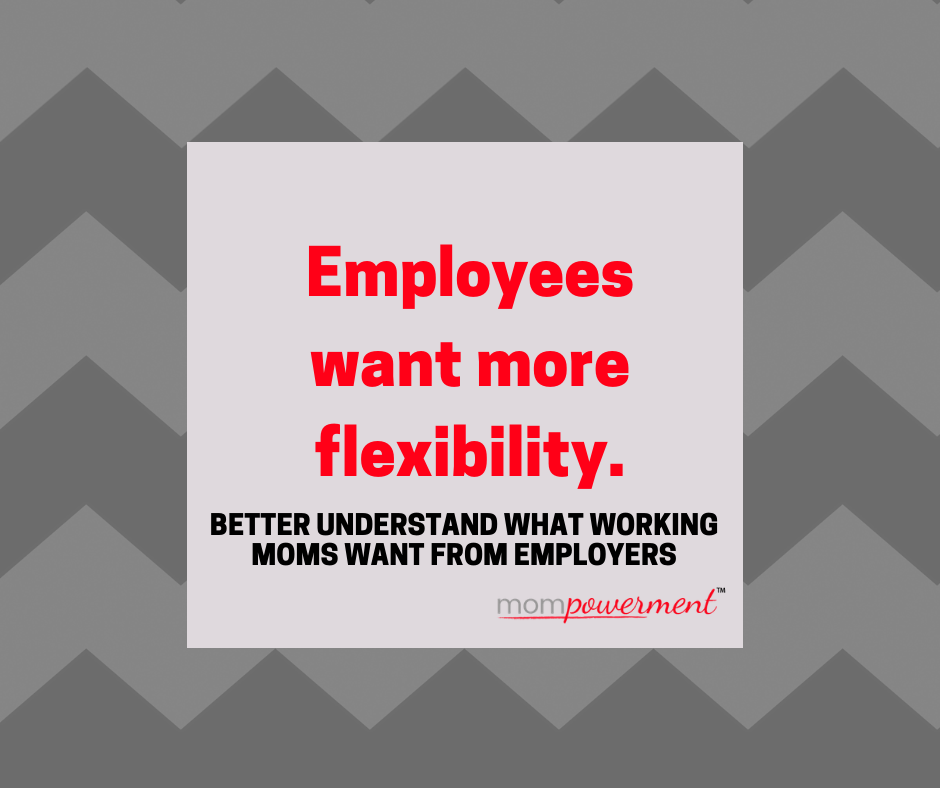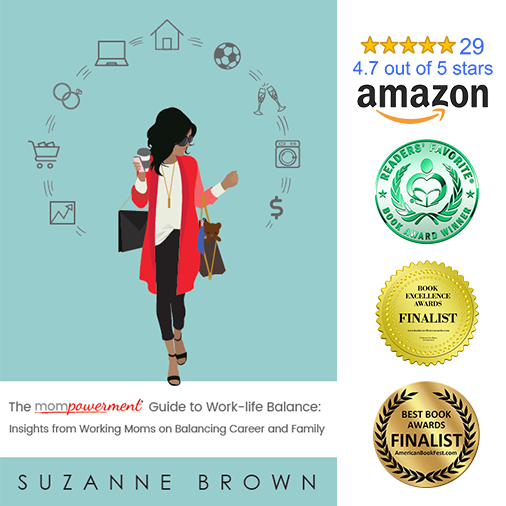
I’ve shared why it makes business sense for companies to be balance-friendly. And as I mentioned in my last blog post, flexibility is one of the most important things that working moms are looking for. Flexibility can take a lot of different forms, though. In this post, I’m sharing ideas as a means of helping companies create flexibility for employees, regardless of what it looks like. I want to empower companies to integrate flexibility into all sorts of different aspects of what you provide and create for employees.
Does it have to be 9-5?
Let’s face it, not all employees want to work 9-5. Even when I worked in a corporate environment in New York City in the competitive advertising agency world, I had teammates who showed up at 10 or 11am. How could that be? They worked until 8, 9, or even 10pm each night. They had shifted their schedule because they were night owls. That was when they had their best ideas and produced their best work.
Some working moms might want to work right after dropping off kids or maybe they can start working even earlier because dad does school drop off. And the strategy behind that early start is to pick kids up after school or to avoid traffic.
Or maybe they want to start a bit later to be the one who drops kids off in the morning. It could be they want to go to appointments for their aging parents and make sure to grab the first appointment of the day at the doctor’s office.
You get the idea. Not everyone wants to be working the typical 9-5 hours. The question becomes whether or not you can be flexible with start and end time.
Do they have to work in the office?
We’ve talked about when they work, so let’s shift our focus to where they work. Do they have to go to the office to get work done? Working remotely can help employees get work done while removing what could be a long commute. Technology enables most of us to work from anywhere. Even if you need a secure connection and aren’t at home, you can use a virtual private network (VPN). And, if you want your employees to have face time, you can easily do video conference calls for a low fee or at no cost, depending on what your needs are.
Do they have to work full-time?
Does every job in your company have to be full-time, which usually means 40+ hours? Is it possible to have some part-time roles where employees are still engaged and making things happen in their careers (e.g., not on the mommy track)? Can you create job shares so that two people can take the place of one?
These less than 40+ hour/week roles can attract incredibly high caliber candidates, who simply can’t or don’t want to work full-time. And not wanting to work full-time doesn’t mean you’re not engaged or excited about your career. It might only be for a few years and then they’ll want to work full-time again.

What about maternity leave?
How are you treating employees during maternity leave? In theory do you say they have 16 weeks, but everyone is expected to return after 8? Do you create challenges within teams because everyone else has to take on work while someone is out on maternity leave? Is it that you leave the work to pile up so that it’s a mountain for the person returning from maternity leave? Could you hire project-based employees in the short-term?
Do you pay for maternity leave? Is there also paternity leave so that fathers can also be part of creating a rhythm with a newborn?
Is there a transition plan for moms post-maternity leave, so that they get back into the swing of things professionally? I interviewed several women who went back to work in a part-time capacity as part of the return to work post-baby. This part-time approach was part of the overall maternity leave initiative and then the moms were back to work with a full-time schedule after a few months. It made the whole return to work post-maternity leave more manageable and more likely.
As educated women have their first child later, they might not return after maternity leave. They might sit out of the professional world for a few years to be a mom when their kids are young.
What things do you provide to new mothers? Do you have a resource bundle that all working mothers get access to upon returning from maternity leave? For example, can you create a calendar for your pump room that new mothers can now access? If employees regularly travel, do you pay for transportation of the milk they pump?
What about back-up child care? If your employees’ children are like most, they are often getting sick when initially sent to daycare. What happens if a nanny calls in sick? If working moms can’t miss meetings, what options do they have? Paying for those resources could keep working moms being productive and can keep them as happy employees. Similar resources can also be available for care for aging parents, which can be equally as helpful.
What Employee Resource Groups are in Place?
What sorts of resources or initiatives have you created for your employees? What about the ones specifically for women or mothers? How are you helping women employees look at their long-term trajectory at your company? I’ll speak more about mentors and sponsors in my final post of this series, so I will only mention that here.
Hopefully, you’ve gotten some ideas here and maybe even had suggestions trigger other ideas. See what works for your specific needs now and maybe some things will work later.
More than anything, start the conversation with employees, especially working moms, to understand what they need. And see how their needs change between caring for their children and caring for their aging parents. You will likely have to ask a few different ways to really understand what resources and initiatives are needed but start the conversationHelping Companies Create Flexibility for Employees.
Don’t Forget about Working Dads
The focus of many companies is on working moms. It makes sense with the more traditional care arrangement that families have had in the past to focus resources on moms. Things are changing, though, and helping working dads with resources and initiatives is increasingly more important. Don’t forget to offer the same types of resources to both parents.
Don’t forget that if you’d like Mompowerment to be part of the resources you provide to working moms, whether through buying books in bulk (special pricing for purchases of 10+ books) or in-person or online workshops, email me directly. We can get those resources in place quickly and give working moms practical tips to start creating more balance in their lives.


